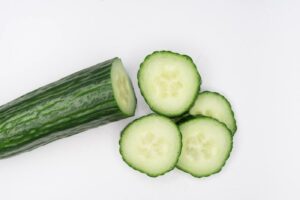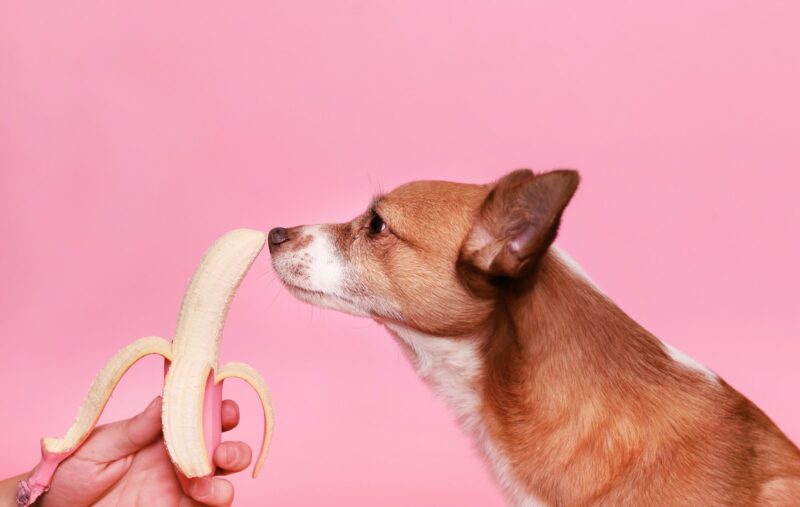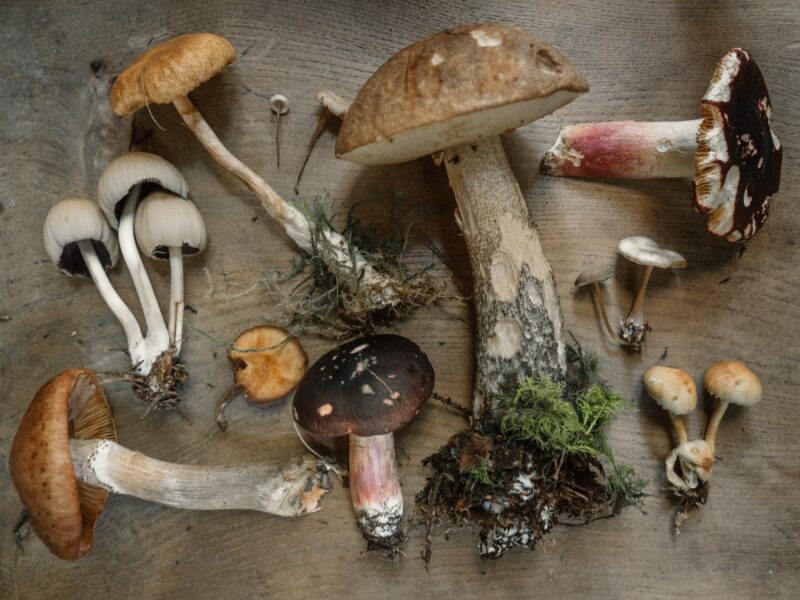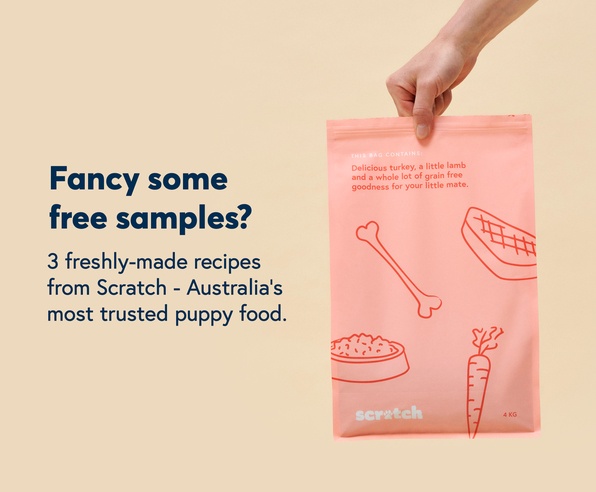It’s common knowledge that apples have doctor-deterring powers, like the way onions do to vampires. It figures that must extend to the veterinarian variety of healthcare providers, too.
We’re kidding, of course: never substitute medical treatment for a bite of Red Delicious. But that doesn’t mean your dog can’t indulge for distinctly non-medicinal reasons.
From core to seed to sauce to slices, there are a few things to consider when indulging your dog in an apple snack.
So, can dogs eat apples?
The short answer: Yes!
For the most part, apples are a brilliant snack for fruit-loving Fidos. With stacks of carbohydrates – the body’s ideal source or energy ⚡ – and tons of fibre, they nourish the digestive tract and encourage pristine number 2s (PetMD, 2020).
Apples are especially useful for dogs with restricted diets, like diabetes (in moderation) or urate stones. Their minimal protein and fat levels mean dogs with special dietary needs can still enjoy the occasional snack, without the risk of traditional high-protein chews.
Thanks (or no thanks, depending on how you see it) to GMOs, it’s likely your grocery store has a myriad of apple species to choose from. From sweet to tart they’re all safe snack options – it just comes down to your dog’s individual tastes.
Can puppies eat apples?
So, my dog can eat apples. But can my puppy?
Baby puppies (up to 12 weeks) can struggle with the fibre content in fruit, but from 4 months on it’s safe to start introductions.
Once older than 12 weeks, dogs of all ages can indulge in an apple slice. But since puppies have such specific nutrient needs to support their growth, keep treats to a minimum.
Alongside a nutritionally balanced and age appropriate puppy food, apple slices are a completely safe snack for your pup to enjoy.
When are apples bad for dogs?
Apples are low-cal, low-fat and real-delicious. Besides a few key considerations (which we’ll go into, chillax) they’re a treat that suits most situations.
They may be a healthy fruit, but apples have a sneaky amount of fructose: fruit sugar. About 19 grams of sugar per the average apple, to be precise. This means a whole apple will usually be too much for most dogs, especially smaller dogs or those who are more concerned with sugar consumption.
Can dogs eat apple cores?
It’s best to chop out the core before feeding an apple to your dog. While not toxic in itself, the core is tougher and more sinewy (apple bones, anyone?) than the flesh, and can pose a choking risk. Particularly for you guzzlers out there.
Can dogs eat apple seeds?
Of all their praises, apples do have one toxic trait: the seeds.
Apple pips actually contain a small dose of cyanide in each seed: a poisonous chemical that can cause hypoxia, or oxygen deprivation across the whole body. Since oxygen is pretty crucial to most living species, this is kind of a big deal.
If your dog has just raided the bin and eaten a couple of seeds accidentally, don’t stress. It’s unlikely that a few apple seeds will pose a real threat, but consistent consumption of seeds is where the danger lies. Just make a habit of removing them and you’ll be worry-free.
Can dogs eat applesauce?
Yes! Applesauce is a treat you can get creative with, perfect for stuffing slow feeders, Kongs or lickimats. You can even mix a bit into your dog’s main meal to keep things exciting.
Keep in mind that just like raw apples, applesauce has a pretty high sugar content. This is amplified by brands that mix in sweeteners and artificial flavours. Always read the ingredient label of any human branded food your dog indulges in, and stick to single-ingredient applesauce.
How much apple can dogs eat?
Treats are best enjoyed when they make up 10% of your dog’s daily diet or less. For big boys half an apple should suffice – cut into slices to prevent choking – but small dogs should stick to a slice or two a day.
How to prepare apples for dogs
Apples require a bit more prep than say, natural dog treats, but you don’t need to be a dog food scientist.
According to Apple and Pear Australia (2016), most Aussie apples are coated with a food-grade wax before they’re available for you to purchase. This gives them that radiant surface you don’t see on freshly-plucked apples, and helps them preserve in your pantry a bit longer. It’s not toxic, but better scrubbed off with some water.
Core your apple, pluck out the stem and dig out all the pips before giving them to your old mate.
Can dogs eat apple skin?
Peeling is down to personal choice and your dog’s taste preference. While peels may help scrub between teeth during the eating process, the benefit is minimal compared to brushing their teeth or providing special dental chews.







